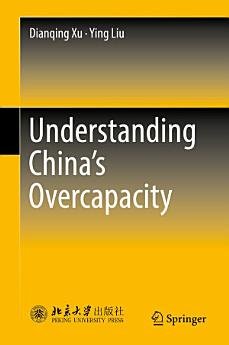Understanding China's Overcapacity
ago 2018 · Springer
Libro electrónico
266
Páginas
reportLas calificaciones y opiniones no están verificadas. Más información
Acerca de este libro electrónico
This book analyzes of the surplus of production capacity in China. According to a government statement, there is a serious surplus of productive capacity in the steel, cement, glass, aluminum, and shipbuilding industries. There was no surplus of productive capacity in above industries between 2002 and 2012, and the current surplus is due to poor government policies on real estate prices after 2012. The book argues that if the Chinese government invested more in social welfare housing over the next few years the surplus of productive capacity would very soon disappear.
Acerca del autor
Xu Dianqing, PhD in economics of University of Pittsburgh, is a tenured professor of economics at the University of Western Ontario in Canada and a guest professor of the China Economic Research Center of Peking University and the Institute of national accounting of Beijing Normal University. He once served as the president of the Chinese society of American economics, and is known as "the father of China's private banks". He was awarded the Sun-Yefang- Prize in 2003, and the Zhang-Peigang-Prize for Economics Development in 2012. He have published more than 20 books, including "From Trade Surplus to the Dispute over the Exchange Rate", "the Road to the End of Poverty", etc.
Liu Ying, an associate professor of statistics at DUFE in China, has published a book "On Institutional Vicissitudes and Development of Bop Statistics" and several articles in statistical research.
Liu Ying, an associate professor of statistics at DUFE in China, has published a book "On Institutional Vicissitudes and Development of Bop Statistics" and several articles in statistical research.
Califica este libro electrónico
Cuéntanos lo que piensas.
Información de lectura
Smartphones y tablets
Instala la app de Google Play Libros para Android y iPad/iPhone. Como se sincroniza de manera automática con tu cuenta, te permite leer en línea o sin conexión en cualquier lugar.
Laptops y computadoras
Para escuchar audiolibros adquiridos en Google Play, usa el navegador web de tu computadora.
Lectores electrónicos y otros dispositivos
Para leer en dispositivos de tinta electrónica, como los lectores de libros electrónicos Kobo, deberás descargar un archivo y transferirlo a tu dispositivo. Sigue las instrucciones detalladas que aparecen en el Centro de ayuda para transferir los archivos a lectores de libros electrónicos compatibles.




